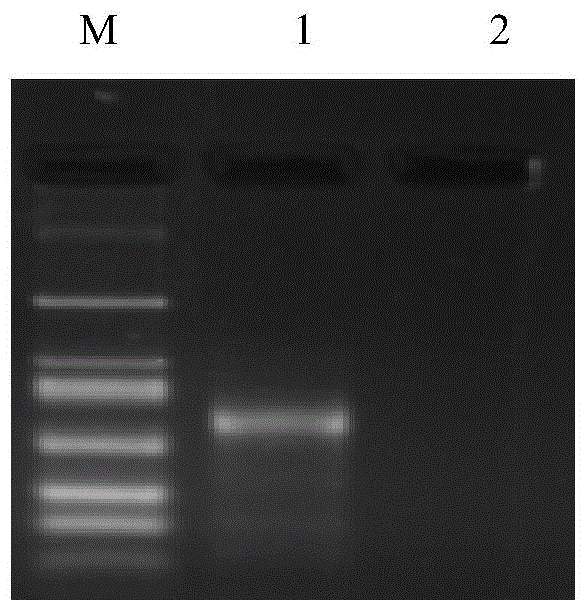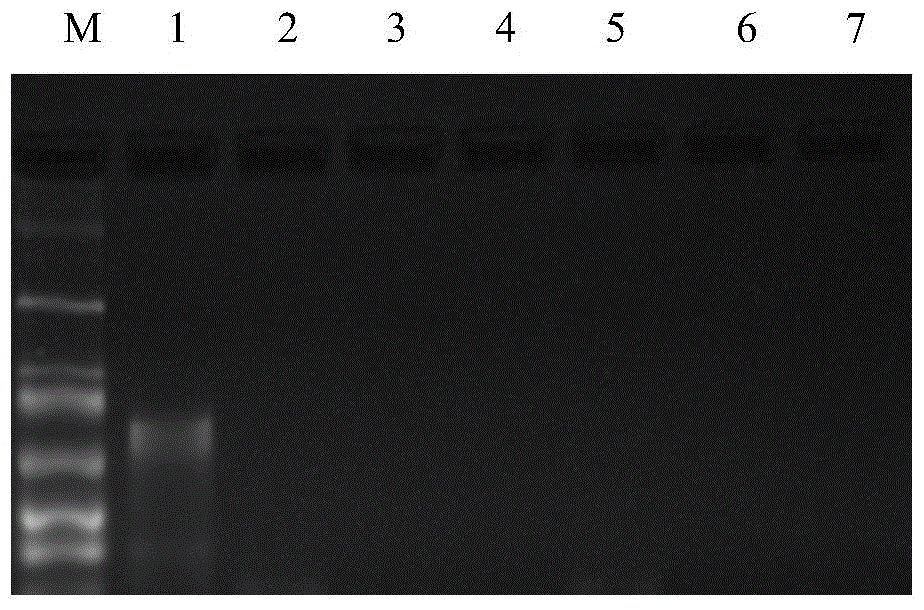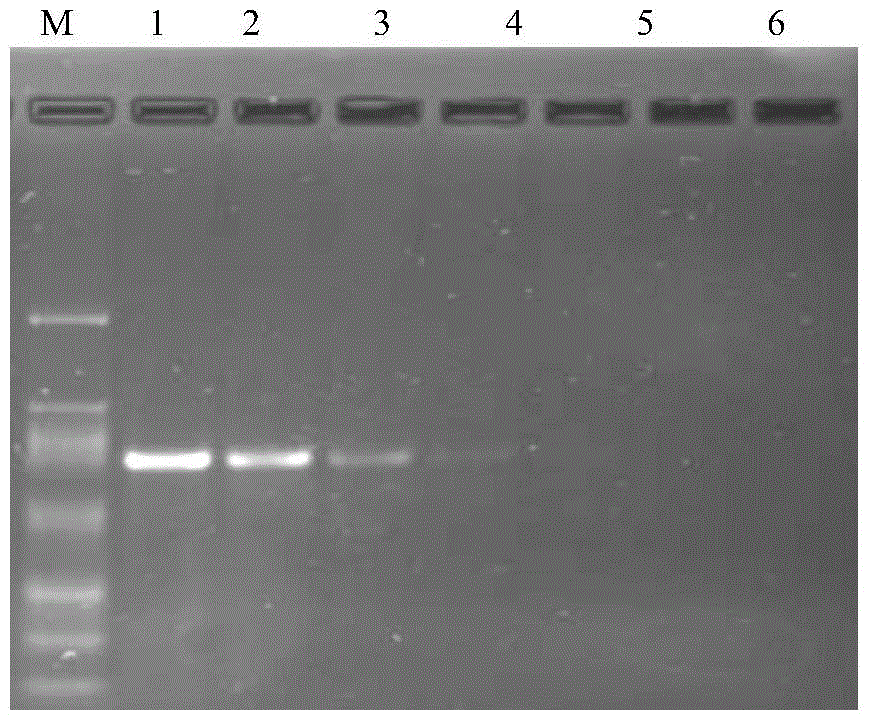A nasba method for detecting tomato spotted wilt virus
A tomato spotted wilt virus, NA-P2 technology, applied in the NASBA field of detection of tomato spotted wilt virus, can solve the complexity and sensitivity limit detection and forecast, long cycle, time-consuming and other problems, to achieve the detection and quantification of specific RNA , lower quality requirements, low mismatch rate
- Summary
- Abstract
- Description
- Claims
- Application Information
AI Technical Summary
Problems solved by technology
Method used
Image
Examples
Embodiment 1
[0051] Embodiment 1: the design of primer
[0052] According to the full-length sequence of the N gene of TSWV in the NCBI nucleic acid sequence database (KC294570.1 (Kunming isolate), HM581936.1 (Nanjing isolate), JF730744.1 (Korea isolate), HM180089 (Taiwan isolate), HQ406984. 1 (US isolate), KC494503.1 (New Zealand isolate), KM379142.1 (Turkey isolate), KF146703.1 (Venezuela isolate)), by comparison under the premise of guaranteeing the incorporation and versatility of the amplification Analyze the highly conserved region of the TSWVN gene, design NASBA reaction primers (NA-P1\NA-P2, NA-P3\NA-P4) with the T7 promoter sequence at the 5' end, and put the primers in the Primer-Blast of the database after the design is completed Compare and verify under the module. The sequences of NA-P3\NA-P4 are: NA-P3: 5′-aattctaatacgactcactataggggagTCCTAAGGCTTCCCTGGTGT-3′ and NA-P4: 5′-aatt-ctaatacgactcactataggggagGCTTGTCGAGGAAACTGGGA-3′, respectively.
[0053] In the detection of positiv...
Embodiment 2
[0054] Embodiment 2: Detection of TSWV
[0055] 1. Extraction of viral RNA
[0056] Take 0.1g sample, grind it into powder with liquid nitrogen, quickly transfer the ground product into a 1.5mL centrifuge tube, add 1mL TrizolReagent, mix by inversion, 2℃~8℃, 12000g, centrifuge for 10min. Take the supernatant, let stand at 15°C-30°C for 5min; add 0.2mL chloroform, shake vigorously by hand (do not vortex) for about 15s. 15℃~30℃, stand for 2min~3min; 2℃~8℃, 12000g, centrifuge for 15min. Carefully pipette approximately 600 μL of the upper aqueous phase without disturbing the middle and lower phases. Add 500 μL of isopropanol to mix the supernatant, and place it at 15°C to 30°C for 10 minutes. 2℃~8℃, centrifuge at 12000g for 10min. Remove the supernatant, add 1 mL of 75% ethanol to the precipitate, and wash; centrifuge at 7500 g for 5 min at 2°C to 8°C. Remove the supernatant, and after the precipitate is naturally dried, dissolve it in 30 μL ~ 50 μL RNase-free water, which is...
Embodiment 3
[0092] Embodiment 3: Actual sample detection and comparative experiment
[0093] The disease samples with typical TSWV symptoms and laboratory samples collected from Yunnan, Shandong, Sichuan and other places were tested by NASBA and RT-PCR respectively, and the effects of the two methods were compared to further evaluate the reliability of the NASBA method .
[0094] 1. NASBA detection of actual samples
[0095] 1) Extraction of viral RNA
[0096] Take 0.1g sample, grind it into powder with liquid nitrogen, quickly transfer the ground product into a 1.5mL centrifuge tube, add 1mL TrizolReagent, mix by inversion, 2℃~8℃, 12000g, centrifuge for 10min. Take the supernatant, let stand at 15°C-30°C for 5min; add 0.2mL chloroform, shake vigorously by hand (do not vortex) for about 15s. 15℃~30℃, stand for 2min~3min; 2℃~8℃, 12000g, centrifuge for 15min. Carefully pipette approximately 600 μL of the upper aqueous phase without disturbing the middle and lower phases. Add 500 μL of ...
PUM
 Login to View More
Login to View More Abstract
Description
Claims
Application Information
 Login to View More
Login to View More - R&D
- Intellectual Property
- Life Sciences
- Materials
- Tech Scout
- Unparalleled Data Quality
- Higher Quality Content
- 60% Fewer Hallucinations
Browse by: Latest US Patents, China's latest patents, Technical Efficacy Thesaurus, Application Domain, Technology Topic, Popular Technical Reports.
© 2025 PatSnap. All rights reserved.Legal|Privacy policy|Modern Slavery Act Transparency Statement|Sitemap|About US| Contact US: help@patsnap.com



